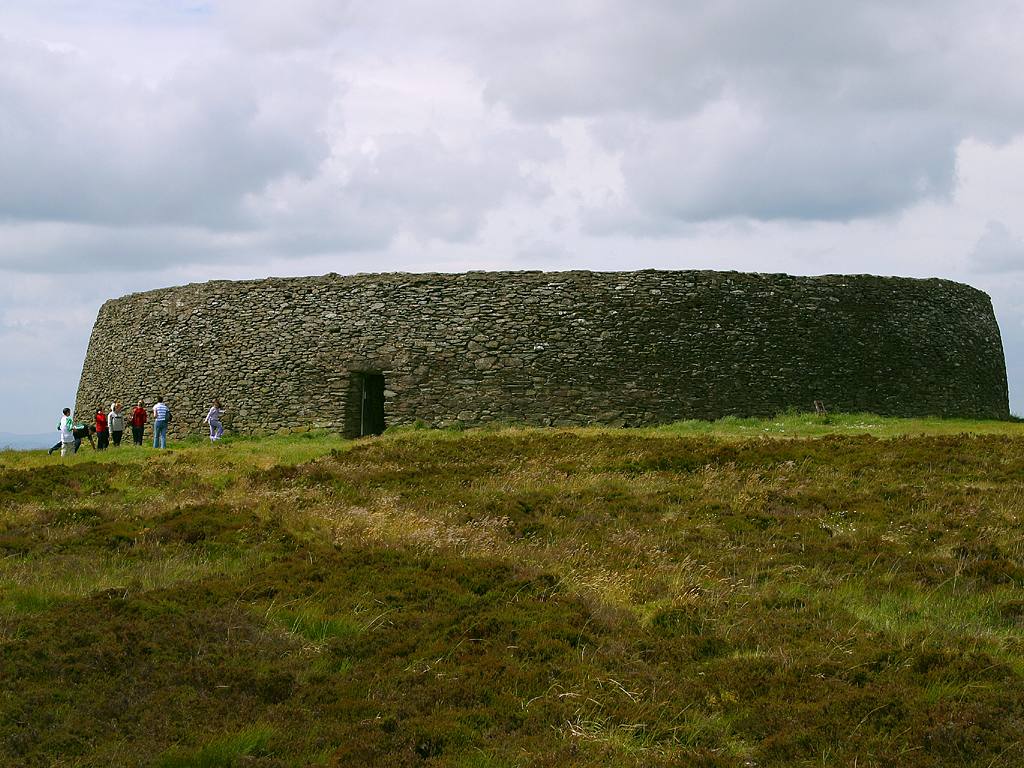|
Foel Fenlli
Foel Fenlli or Moel Fenlli is a hill in Denbighshire, North Wales. With a summit at an elevation of , it is the second highest peak of the Clwydian Range. A popular ascent leads south from the car park at Bwlch Penbarras, which is also a popular starting point for ascending Moel Famau to the north. The Offa's Dyke Path runs around the western slopes. The remains of a hillfort roughly ten hectares in area are found on the peak; the site is believed to date back to the Iron Age The Iron Age () is the final epoch of the three historical Metal Ages, after the Chalcolithic and Bronze Age. It has also been considered as the final age of the three-age division starting with prehistory (before recorded history) and progre ... but was later reoccupied during the Dark Ages. The "iniquitous and tyrannical" king Benlli (after whom the mountain was named) probably lived there c. 450. He was admonished for opposing Saint Germanus, and he and his castle were "consumed by fire fro ... [...More Info...] [...Related Items...] OR: [Wikipedia] [Google] [Baidu] |
Moel Famau
Moel Famau is the highest hill in the Clwydian Range and the highest point (county top) of the county of Flintshire in Wales (both the historic county and the current council area). It lies on the boundary between Denbighshire and Flintshire. The hill, which also gives its name to the Moel Famau country park, has been classed as an Area of Outstanding Natural Beauty since 1985. It is also surrounded by several well-preserved Iron Age hill forts. It is also the fourth-highest peak in the extended AONB of the Clwydian Range and Dee Valley. A northern part of the Offa's Dyke long-distance footpath, one of the UK's most popular National Trails, crosses the summit of Moel Famau and the Jubilee Tower. Loggerheads Country Park is nearby. Name Although historical sources attest to a variety of spellings (such as ''Moel Famma'', ''Moel Vamma'' and ''Moel Fammau''), the only two in common use today are ''Moel Famau'' and ''Moel Fama''. The first word ''moel'' is a common Welsh pl ... [...More Info...] [...Related Items...] OR: [Wikipedia] [Google] [Baidu] |
Hillfort
A hillfort is a type of fortification, fortified refuge or defended settlement located to exploit a rise in elevation for defensive advantage. They are typical of the late Bronze Age Europe, European Bronze Age and Iron Age Europe, Iron Age. Some were used in the post-Roman Empire, Roman period. The fortification usually follows the contours of a hill and consists of one or more lines of Earthworks (Archaeology), earthworks or stone Rampart (fortification), ramparts, with stockades or defensive walls, and external ditches. If enemies were approaching, the inhabitants would spot them from a distance. Prehistoric Europe saw a growing population. It has been estimated that in about 5000 BC during the Neolithic between 2 million and 5 million lived in Europe; in the Late Iron Age it had an estimated population of around 15 to 30 million. Outside Greece and Italy, which were more densely populated, the vast majority of settlements in the Iron Age were small, with ... [...More Info...] [...Related Items...] OR: [Wikipedia] [Google] [Baidu] |
Hillforts In Denbighshire
A hillfort is a type of fortified refuge or defended settlement located to exploit a rise in elevation for defensive advantage. They are typical of the late European Bronze Age and Iron Age. Some were used in the post-Roman period. The fortification usually follows the contours of a hill and consists of one or more lines of earthworks or stone ramparts, with stockades or defensive walls, and external ditches. If enemies were approaching, the inhabitants would spot them from a distance. Prehistoric Europe saw a growing population. It has been estimated that in about 5000 BC during the Neolithic between 2 million and 5 million lived in Europe; in the Late Iron Age it had an estimated population of around 15 to 30 million. Outside Greece and Italy, which were more densely populated, the vast majority of settlements in the Iron Age were small, with perhaps no more than 50 inhabitants. Hillforts were the exception, and were the home of up to 1,000 peop ... [...More Info...] [...Related Items...] OR: [Wikipedia] [Google] [Baidu] |

